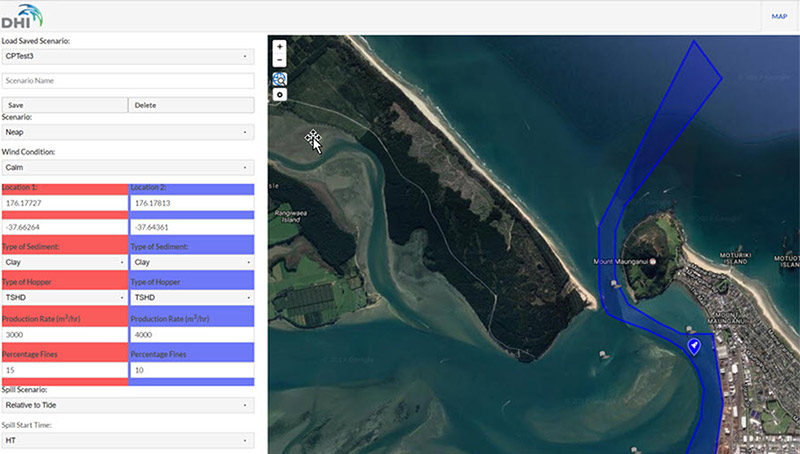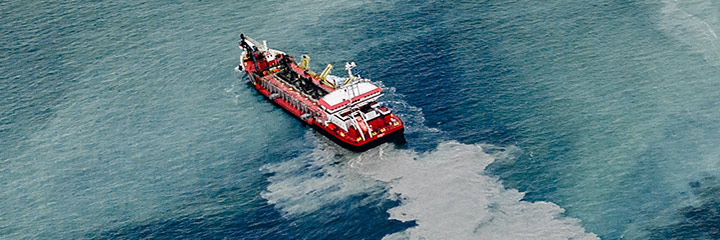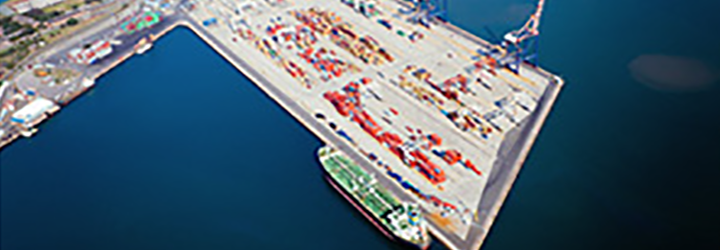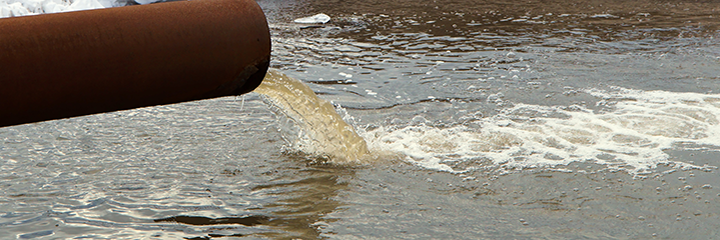Understand and quantify environmental impacts in your system
Assess the potential environmental impact of dredging, disposal and reclamation activities for improved management and regulation
Why MIKE 21/3 Particle Tracking?
Use in real-time applications
If you want software with short simulation times that is useful in real-time applications – look no further. The Particle Tracking module is less computationally demanding compared to Eulerian-based transport modules. Furthermore, you can run the Particle Module in a decoupled mode based on pre-calculated hydrodynamic inputs, making it even more fast and efficient!

Dredge Spill Planning Tool for rapid assessment of effects
Simulation of dredging spoils in Singapore with moving point sources
Better predict particle movements through the seamless integration with MIKE 21/3 FM Hydrodynamic models
Having the Particle Tracking module and MIKE’s 2D and 3D flexible mesh Flow models is a powerful duo. You can define particle properties such as size, density, setting velocity and critical shear stress and track them as they move with the flow. Calculate the path of each particle and output the spatial plot of sediment concentration classes in 2D or 3D depending on the model.
Run 2D and 3D simulations of decay, sedimentation, buoyancy and more
Track individual particles of different sizes, sources and positions within the water column to visualise flow patterns, particularly eddies and recirculation cells. Examine the movement of material from dredging and disposal activities. With MIKE 21/3 Particle Tracking, the particles/substances may be a pollutant of any kind, conservative or non-conservative. This includes suspended sediment particles, inorganic phosphorous, nitrogen, bacteria or chemicals.
Watch the fate of three different types of particles coupled to a MIKE 3 FM hydrodynamic model
Watch how you can easily visualise particle tracks in Google Earth
Communicate results with powerful visualisation
The Particle Tracking module supports your work in these areas

Dredging
Assess dredging practices and proposed dredging operations including site selection and placement.

Port Planning & Operations
Analyse sediment transport to predict siltation and contaminant transport in seaports.

Water Quality
Perform risk analyses for accidental spillage of hazardous substances. Plan, design and monitor outfalls.
DHI’s experts can review your sediment dispersion concerns and build a Particle Tracking model to provide scientific support for potential solutions.
Integrate MIKE 21/3 Particle Tracking into web-based decision support
Featured software subscription package
Environmental Engineering
Additional capabilities & unique features
Save time and improve your modelling workflows using MIKE Zero’s upgraded editors and viewers. Take advantage of new keyboard shortcuts and themes, improved tabbing, tear off and cascade functionality plus easier access to User Guides and Scientific Documentation.
MIKE Zero, DHI’s fully Windows integrated graphical user interface, is now better than ever and comes standard with all MIKE 21/3 software. Enjoy easy access to new MIKE Cloud applications and Cloud-enhanced functionality, plus an extended set of MIKE tools within theme-based (rather than product-based) interactive workflows. Ensure important model components such as sources and structures stay at the forefront with a new interactive, customisable floating mapping window. Lastly, the updated tabbing functionality will help you work in a more organised and efficient manner.
MIKE 21/3 PT allows the user to create 2D-maps containing the instantaneous output data which consists of particle concentration and erosion / deposition / net sedimentation. Users can also create 2D-maps containing the averaged or accumulated output data consisting of particle concentration, erosion / deposition /net sedimentation and exceeding concentration.
With the help of the MIKE Particle Track toolbox, it is possible to reverse 2D and 3D flow fields to investigate sources of pollution and/or debris.
MIKE 21/3 PT is operated through a fully Windows integrated Graphical User Interface and is compiled as a true 64-bit application. Support is also provided at each stage by an Online Help System so you’re never working alone.
As part of the versatile MIKE system, MIKE 21/3 PT is also supported by pre-and post-processing, manuals and technical support.
Let's get started
Complete this form and we will be in touch soon.



